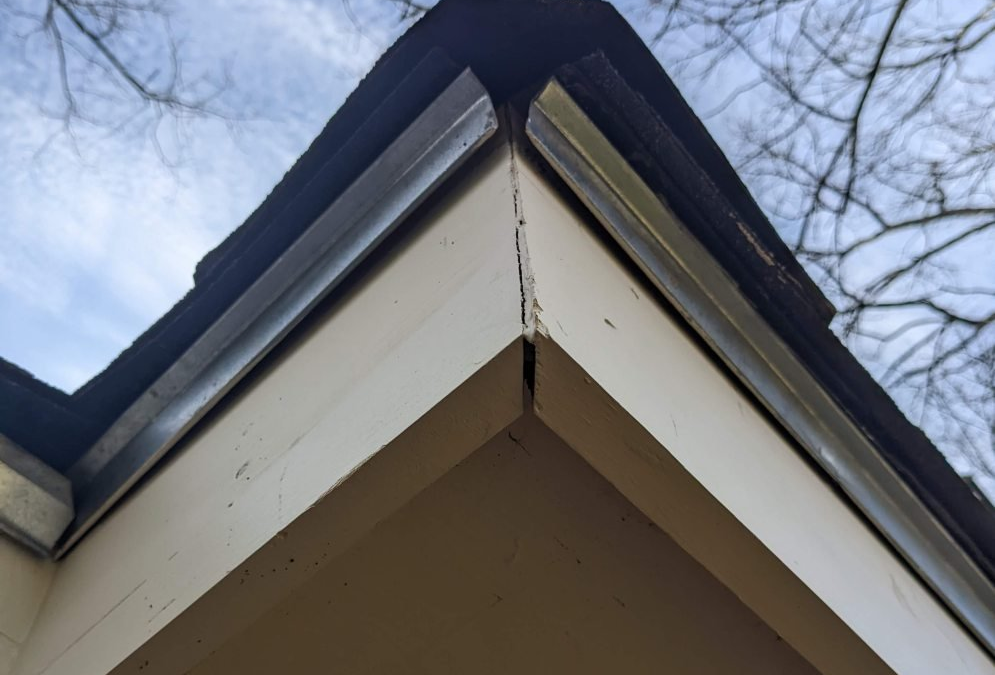Rain management is essential to maintaining the integrity of your home, especially in areas like Memphis, TN, where heavy rainfall is common. Tiger Gutters recognizes the importance of every component in your gutter and roofing systems. One of the most underrated yet vital elements of a functional gutter system is the gutter drip edge. This thin metal strip plays a pivotal role in directing rainwater safely into the gutters while protecting your home from potential water damage. In this detailed guide, we’ll explore what a gutter drip edge is, why it’s essential, and how it fits into your home’s overall drainage system.
What is a Gutter Drip Edge?
A gutter drip edge is a narrow strip of metal installed along the edge of a roof. It serves as a barrier, ensuring water flows directly into the gutters rather than seeping beneath the shingles or onto the fascia. Without it, rainwater can flow uncontrolled, leading to costly structural damage over time. Drip edges come in various shapes and materials, but their primary purpose remains the same: to protect the vulnerable areas of your roof and gutter system from moisture-related issues.
Why is a Gutter Drip Edge Important?
The drip edge may be a small addition to your home’s exterior, but its benefits are extensive. First and foremost, it protects the fascia board, which is the horizontal beam that supports the gutter. Without a drip edge, water can run off the roof, seep behind the gutters, and cause rot, mold, and paint damage. Additionally, a properly installed drip edge prevents water from backing up under the roof shingles, which can compromise the roof deck and lead to leaks. By channeling water directly into the gutters, the drip edge also improves the efficiency of your gutter system, ensuring it functions optimally during heavy rain. Moreover, this simple installation extends the lifespan of both your roof and gutters, saving you money in the long run.
Materials Used in Gutter Drip Edges
When it comes to choosing a drip edge, the material plays a crucial role in durability and aesthetics. Aluminum is a popular choice because it’s lightweight, resistant to rust, and easy to install. For those looking for a stronger option, galvanized steel offers excellent strength and resistance to corrosion when properly coated. Copper, though more expensive, provides a high-end look and unmatched durability, often sought for homes with premium architectural designs. Each material has its own advantages, and the best choice depends on your home’s specific needs and your budget.
Types of Gutter Drip Edges
There are several types of drip edges, each designed for specific roofing needs. The most common is the Type C (L-shaped) drip edge, which is straightforward to install and fits seamlessly under the shingles and over the fascia. Type D (T-shaped) drip edges feature a curved design that directs water further away from the roof edge, offering enhanced protection. Finally, there’s the Type F, also known as a gutter apron, which is ideal for roofs with shingles that extend beyond the decking. Understanding these variations helps homeowners choose the right drip edge for their specific roof structure.
How Does a Gutter Drip Edge Work?
The drip edge acts as a protective shield, ensuring rainwater flows exactly where it’s supposed to go—into the gutters. Installed along the edge of the roof, it extends slightly beyond the fascia and overlaps the gutter. This positioning directs water away from vulnerable areas, such as the fascia, soffit, and roof deck, preventing issues like water pooling, wood rot, and structural damage. When combined with a functional gutter system, the drip edge ensures that rainwater is efficiently channeled away from your home’s foundation, reducing the risk of basement flooding and soil erosion.
Consequences of Not Having a Gutter Drip Edge
Homes lacking a drip edge are prone to a variety of issues. Water dripping behind the gutters can cause the fascia board to rot, leading to costly repairs. Over time, unchecked water seepage can result in mold and mildew growth, which not only affects your home’s structure but also poses health risks. Without a drip edge, gutters may become less effective, as water can bypass them entirely, causing overflow and wear. These problems can escalate during storms, where heavy rainfall exposes every weakness in your gutter and roofing system.
When Should You Install or Replace a Drip Edge?
The ideal time to install or replace a drip edge is during a roof replacement, as it ensures seamless integration with new shingles and roofing materials. However, if your home already shows signs of water damage, such as rotting fascia or leaks, retrofitting a drip edge is a wise investment. Many older homes lack drip edges entirely, making their installation a valuable upgrade for enhanced water management and protection. Regular inspections can help identify when a drip edge needs replacement due to wear, rust, or improper installation.
Benefits of Adding a Drip Edge
Adding a drip edge to your gutter system provides a range of benefits, including reduced maintenance costs and improved curb appeal. By directing water safely into the gutters, it helps maintain the structural integrity of your roof and protects the exterior of your home from premature wear and tear. Moreover, many modern building codes now mandate drip edges for new roofs, making them an essential feature for compliance and long-term protection.
Tiger Gutters: Educating Memphis Homeowners About Gutter Systems
At Tiger Gutters, we pride ourselves on being a trusted source of information for homeowners in Memphis, TN. Understanding the components of your gutter system, like the drip edge, can make a significant difference in protecting your home and ensuring it stands the test of time. While seemingly small, a drip edge plays a vital role in rainwater management, highlighting the importance of every detail in your roofing and gutter systems.
Conclusion
The gutter drip edge may not be the most talked-about feature of your home’s exterior, but its impact on water management and structural protection cannot be overstated. From safeguarding the fascia and roof deck to enhancing the efficiency of your gutter system, the drip edge is an invaluable addition to any home. Whether you’re considering a roof replacement or upgrading your gutters, understanding the function and importance of a drip edge is key to making informed decisions.

